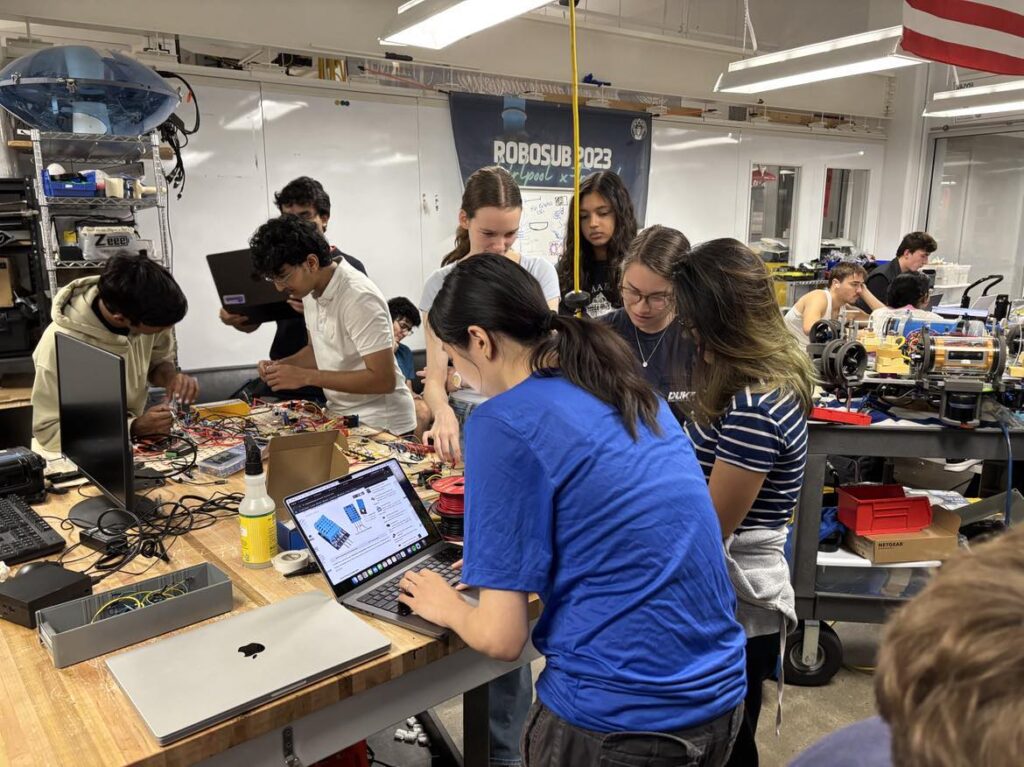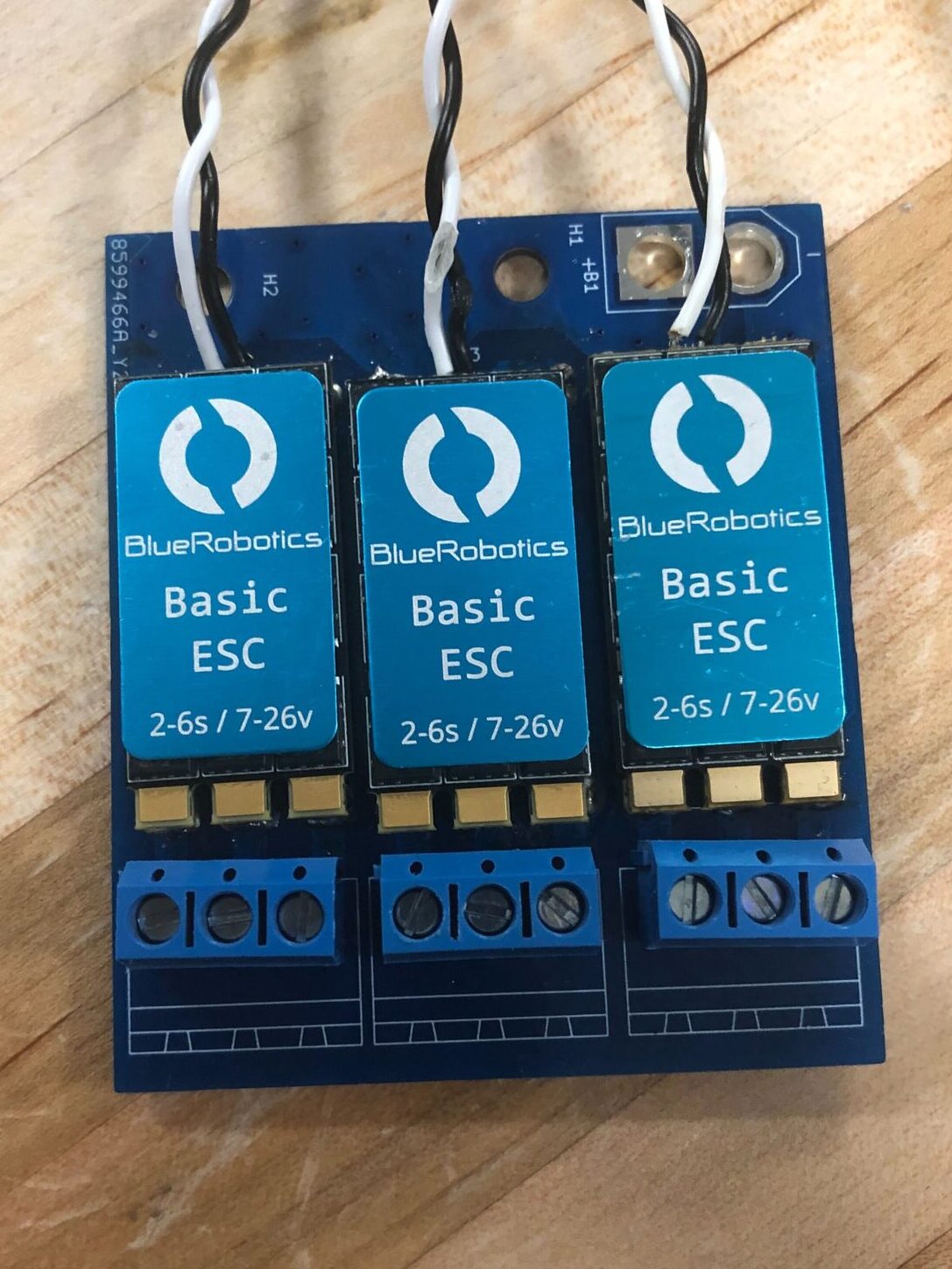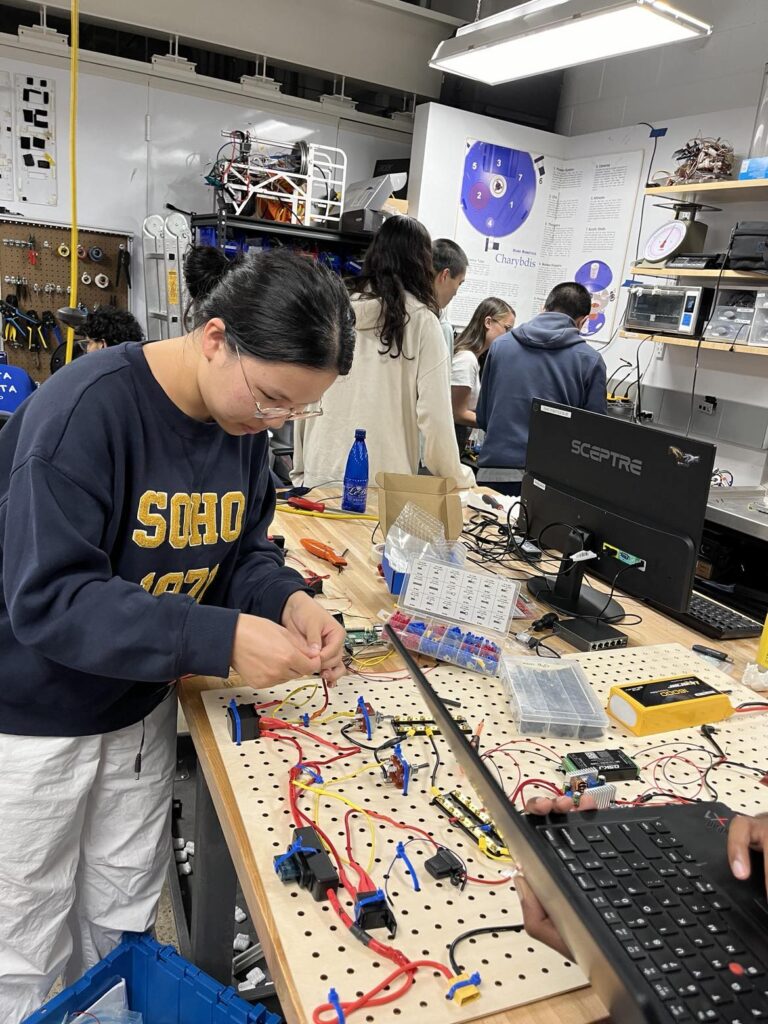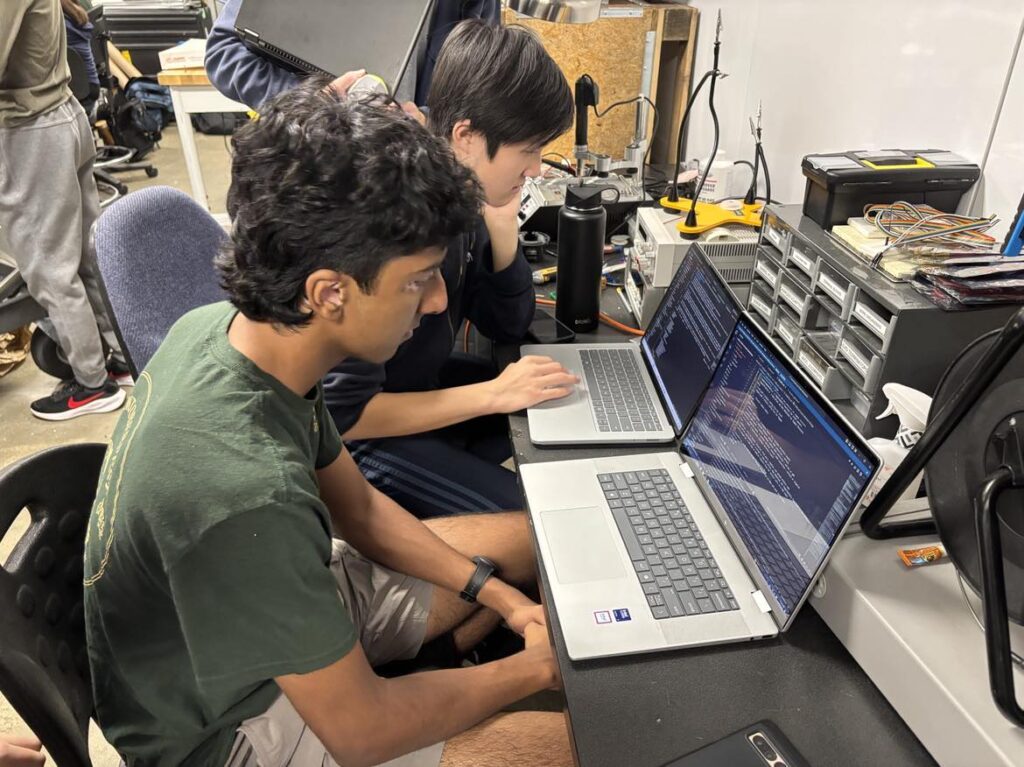Within these past few weeks, our current projects have reached major milestones with their progress! For the groups who’ve been modeling our electrical stacks on wood boards, the big stack team has entirely finished the battery connectors, kill switches, motor control/ESC, and started to add in sensors. The mini stack team has not only finished building out the mini electrical stack, but they’ve also finished designing a custom PCB to house all of our ESCs. This has been purchased and just recently arrived, so we’re all very excited to add it to the system and test it out!



Due to our progress, the electrical team has started tackling a few other challenges. The newest two projects are inter-vehicle communication (IVC), and working on offboard communications.
At the beginning of the year, our team did significant research into options for communicating between our small robot, now named Crush, and our big robot, Oogway. Despite our efforts to request quotes, we haven’t received any messages back from those companies. Recently, the team found another underwater modem that looks very promising. With an explicit price tag and promising specs, Ren did a further dive into the details and everything looks great! We plan to bring this up with our advisor, Dr. Chen, and hear his thoughts before making the purchase.
Offboard communications or offboard comms for our robot is our process for communicating between the main robot computer and all of our sensors and servos. In our design, we deliberately made Crush very similar to Oogway in terms of its sensors and other peripheral functionalities. Because of this, we’re looking into methods to not entirely rewrite or copy and paste code between Oogway and Crush, but rather just to make a command that lets us use a function written for Crush or another function written for Oogway. We plan to have this be an option for our sensors, and thrusters as those are the main changes codewise between the robots. This lets us keep most of the code base the same and enables a quick swap between the two robots.
Another part of offboard comms is communicating with our thrusters. In the past, we’ve always used rosserial to send messages to our thrusters. With our team’s overall migration to ROS 2, this feature has now been deprecated, requiring us to directly communicate with the thrusters via serial. This is a newer project that we will start up even within offboard comms, but we have some past experiences of issues directly communicating via serial to the thrusters. In our next pool test, this will be a major focus, and we plan to get more data and insight into existing issues.

